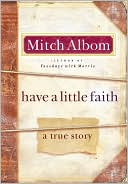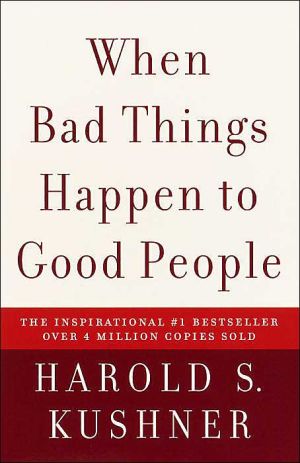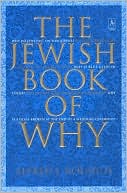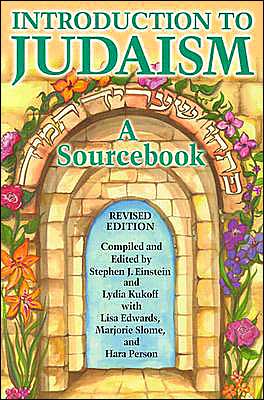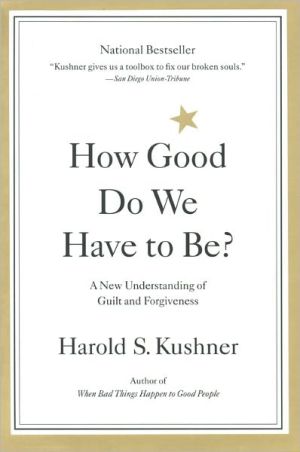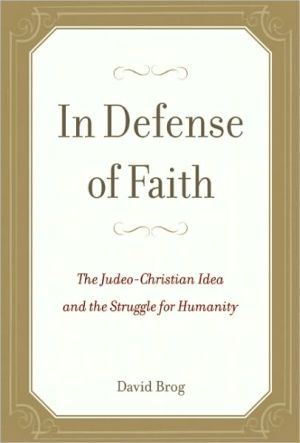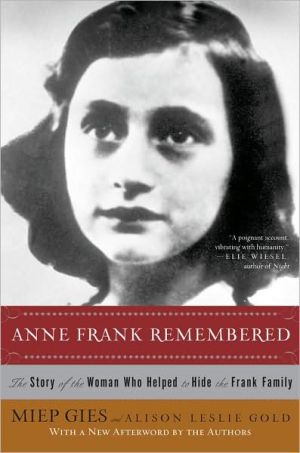Jewish Arguments and Counterarguments: Essays and Addresses
The National Director of the Department of Contemporary Jewish Life of the American Jewish Committee collects 72 articles, essays, book reviews, and letters to the editor he has published over two decades. They consider issues of American Jewry and Judaism, Israel and Jewish peoplehood, and the claims of Jewish tradition in the modern world. They are not indexed. Annotation c. Book News, Inc., Portland, OR
Search in google:
The National Director of the Department of Contemporary Jewish Life of the American Jewish Committee collects 72 articles, essays, book reviews, and letters to the editor he has published over two decades. They consider issues of American Jewry and Judaism, Israel and Jewish peoplehood, and the claims of Jewish tradition in the modern world. They are not indexed. Annotation c. Book News, Inc., Portland, OR Booknews The National Director of the Department of Contemporary Jewish Life of the American Jewish Committee collects 72 articles, essays, book reviews, and letters to the editor he has published over two decades. They consider issues of American Jewry and Judaism, Israel and Jewish peoplehood, and the claims of Jewish tradition in the modern world. They are not indexed. Annotation c. Book News, Inc., Portland, OR (booknews.com)
Jewish Arguments and Counterarguments\ ESSAYS AND ADDRESSES\ \ \ By Steven Bayme\ \ KTAV PUBLISHING HOUSE, INC.\ Copyright © 2002 Steven Bayme.\ All rights reserved.\ ISBN: 0881257389\ \ \ \ \ Chapter One\ \ \ Conflicting Jewish Responses to Modernity\ \ \ Although historians past and present have differed as to the exact origins of Jewish modernity, the consensus is that the onset of modernity posed definite challenges to the existence and self-identity of the Jew. Modernity connoted the acceptance of Western categories as criteria by which Judaism could be evaluated. In this sense Benedict Spinoza weighed Judaism by the category of universal reason and found it wanting. Haskalah, as will be demonstrated, attempted to interpret Judaism by the standards of Western cultural norms. In other words, the medieval Jew perceived himself as superior to the external culture. In contrast, the modern Jewish temper demanded acceptance by the standards of the external culture and began to acknowledge the greatness of Gentile society.\ Unquestionably certain medieval Jews, notably Maimonides, appreciated the value of secular learning. Yet modernity meant the collapse of the traditional medieval synthesis of faith and reason. Where Maimonides had supremacized faith over reason, modern culture demanded that reason evaluate items of faith. In this sense the European Enlightenment markedly differed from medieval rationalism much as the Jewish Haskalah deviated from the paths of medieval Jewish philosophy.\ For Ashkenazic Jews, modernity also meant a departure from the medieval educational curriculum. As will be seen, efforts were made to transform the medieval heder into an institution that emphasized both Judaic and secular instruction.\ Finally, modernity brought the collapse of the traditional Jewish communal structure. Autonomy and corporate status disintegrated as emancipation came in stages to the various Jewish communities of Western Europe. The rise of modern nation-states meant that members of separate, private autonomous corporations such as the medieval Jewish community had to be either integrated into the nation-state body politic, i.e., as citizens, or expelled from the body politic altogether. In this sense the emancipation of the Jew became a necessity for the modern nation-state.\ These changes did not occur overnight. Their origins may be traced to the first stirrings of discussion regarding Jewish emancipation in the seventeenth century. For Sephardic Jewry many of these trends can be traced even earlier. Yet the thrust of these changes challenged the very self-identity of the modern Jew. His dilemma became one of rationalizing his own continued separate existence in a world in which medieval religious differentiations had been blurred.\ These challenges to Jewish identity spawned a variety of ideologies propounding change and adjustment in Jewish life. Perhaps the first such ideology was that of the Haskalah, or Jewish enlightenment. Haskalah, a word derived from the Hebrew hiph'il, or causative form, aimed at both the introduction of secular culture into Jewish life and an effort to enlighten the Jews themselves. In other words, the Haskalah, as will be seen, constituted an effort to transform the Jews socially, culturally, and economically.\ For example, Naftali Herz Wessely (1725-1803), a Haskalah poet and biblical exegete, published in 1782 his Divrei Shalom Ve'emet in response to Joseph II' s Edict of Toleration, which granted the Jews limited freedoms of occupation and residence. Wessely's pamphlet advocated educational reform in the Jewish schools. The author perceived the dispersion as an opportunity rather than a punishment and urged the Jews to abandon national redemptive hopes and instead to participate fully in the modern culture. Such participation necessitated fundamental changes in Jewish education. A graded curriculum and greater emphasis upon secular and extratalmudic content would mark a significant departure from the traditional heder program. For Wessely, secular education, or Torat Ha-Adam, chronologically preceded the Torah of God and assumed the stature of a religious command.\ Wessely's pamphlet by no means comprised the entire thrust of the Haskalah. The movement contained different intellectual currents and varied according to both geography and chronology. In Western Europe the Haskalah of Moses Mendelssohn and the Meassefim, the group of Mendelssohn's disciples who published the educational and literary journal of the Haskalah, was generally quite conservative. In Eastern Europe, where Enlightenment was to arrive a half-century later, the Haskalah became less religiously oriented and more overtly polemical against the established Orthodoxy.\ These differences in both tone and content can be explained in terms of varying social contexts. In Western Europe Jewry received emancipation on the condition that the Jews become men of enlightenment. The Haskalah originated as an ideology for change within the Jewish world and for Jewry's acceptance within the Gentile environment. The conditional grant of emancipation to the "enlightened" Jew created new options of Jewish identity for acculturated Jewish intellectuals. Such individuals now sought to encounter the Gentile upon territory in which religion constituted a negligible difference between them. In such a context Moses Mendelssohn, the "exception Jew" par excellence, attempted to interpret Judaism for enlightenment circles.\ This grant of emancipation followed a general secularization of society. The modern capitalist economy, with its stress on individual wealth and worldliness, permitted the Jew to be evaluated as an individual rather than as a member of a group. Even more importantly, the modern nation-state simply could not allow private corporations, e.g., the Jewish kehillah, to remain as a "state within a state" and thereby attenuate the centralized nation-state. Finally, the emerging secular culture, with its emphasis upon universal reason, theoretically held little room for religious bigotry and intolerance.\ Yet this very grant of emancipation posed new problems of Jewish identity and continued existence. Jewish identity as defined by membership in the community was now placed upon a voluntaristic basis. The very continuation of communal group life was questioned by the proponents of emancipation. Similarly the challenge of modern secularism and its attacks upon religious culture extended to modern Judaism and questioned the necessity for continued religious differentiation between Jew and Christian.\ Internal changes paralleled the threats to Jewish identity from without. Rabbinic authority, the traditional power center of Jewry, began to wane. Accusations of closet Sabbetianism, reciprocal bans of excommunication, and widespread envy of rabbinical positions, culminating in the infamous Emden-Eybeschuetz controversy of the 1750s, all contributed to a general decline of prestige for the organized rabbinate. In such a context, advocates of changes within Jewish life that necessitated diminished rabbinic authority found a ready audience.\ The world-view of Moses Mendetssohn, most renowned of the Western Maskilim, may be understood as a response to these challenges to Jewish identity. In general Mendelssohn's theories epitomized the ideology of the Haskalah in the West. For Mendelssohn Judaism equaled the religion of pure reason. Whereas Christianity demanded belief in irrational doctrines, e.g., Incarnation, Virgin Birth, and Resurrection, Judaism allegedly knew of no dogmas. The truths of Judaism consisted of purely rational propositions discoverable by anyone who reflected upon religious matters. Revelation for the Jew consisted of a corpus of legislation binding upon every Jew as a member of God's Chosen People. Philosophically Judaism stood united with rational religion. The two differed solely in the realm of religious ritual.\ The validity of Mendelssohn's position depends upon the definition of dogma. Obviously belief in the revelation of law constituted belief in a truth accessible only through faith. Moreover, the very concept of a Chosen People defied rational analysis. Similarly Mendelssohn's explanation of miracles as a realm of physical fact, i.e., events which historically occurred, yet upon which the truths of religion do not depend, failed to satisfy the test of reason.\ Yet Mendelssohn did not regard these areas as "dogmas" in the salvational sense. He argued, following Joseph Albo, the fifteenth-century Spanish-Jewish philosopher and communal leader, that Judaism contains many truths, which the individual ought to accept, yet one's personal salvation does not depend upon belief in such doctrines. In that sense Mendelssohn portrayed Judaism as less "dogmatic" than Christianity. This reading of Judaism certainly approximated the standard of rational religion first adumbrated by Tillotson and Locke.\ Mendelssohn's somewhat questionable formulation of Judaism did not comprise the core of his significance. Rather he contributed primarily toward the formulation of a defensive Jewish ideology. The presuppositions of a modern culture questioned the necessity for continued Jewish separateness. Challenged by the question of the compatibility of Judaism and its legalistic system with a modern system of democracy, Mendelssohn responded in Jerusalem that the two were indeed compatible.\ The problem of compatibility had been first raised in the seventeenth century by Benedict Spinoza. In his Theological-Political Treatise, the Dutch-Jewish philosopher portrayed Judaism as a system of law applicable solely to a political nation-state. The implication for Spinoza was clear. Judaism and modernity could not coexist, and therefore Jewry constituted an anachronism in the modern world.\ Ironically the ultra-Orthodox Moses Sofer, better known as the Hatam Sofer, adopted a similar line of reasoning in the nineteenth century. Sofer agreed that Judaism and modernity were in mutual contradiction. In consequence, he and his community waged bitter war against modernism on the slogal "Hadash 'asur min ha-Torah" ("Innovations are prohibited scripturally").\ Mendelssohn attempted to refute these assumptions. The very title of Jerusalem signified that the holiest Jewish city continued to symbolize the eternality of Judaism and traditional observance even though the city itself had lost its earthly splendor and political power.\ The analysis of Jerusalem as a spiritual force rather than a political power lay at the base of Mendelssohn's philosophical originality. For reasons totally alien to the thought of Montesquieu and Jefferson, Mendelssohn advocated separation of church and state. The political Jerusalem had been historically unique; the spiritual Jerusalem continued as a religious model more rational and inspiring than that of Christianity. In other words, whereas Christianity possessed dogmas and potentially idolatrous symbols. Judaism knew of no dogmas and possessed only mitzvot, i.e. commands to action.\ This social theory rested upon a somewhat odd reading of history. For Mendelssohn, as for Hobbes and Locke, the State of Nature had evolved into a social contract. The terms of that social contract, however, dictated that men had duties to the state but none to the church. The church could advise and teach but possessed no compulsive power. Similarly the Jewish institution of the herem, or ban of excommunication, constituted at best an anachronism and at worst a fundamental infringement upon the political rights of freedom of expression. Moreover, by denying the individual religious instruction to remedy his disbelief, excommunication would be religiously incorrect.\ Mendelssohn's desire to abolish the herem must be understood within an historical context. Generally his political theory was quietist. He believed, following Liebniz, that whatever unfolded represented the divine will and should therefore be accepted. Men ought to attempt little by themselves although certain modest steps might be taken. Mendelssohn here took such a modest step. He pleaded for full equality and emancipation for the Jews. Whereas earlier shtadlanim, or court Jews, e.g., Menasseh ben Israel, had requested tolerance for the Jews, Mendelssohn demanded full emancipation.\ Yet Mendelssohn realized that emancipation carried a heavy price. Wilhelm Döhm, who had earlier argued for improvement in Jewish civil status at Mendelssohn's bequest, had urged temporary retention of the herem until the Jews fully entered general culture. Mendelssohn wished immediate entry. The secular authorities clearly did not desire the retention of corporate powers or a "state within a state." Therefore although Mendelssohn did advocate the retention of certain Jewish courts, the herem had to be rejected.\ In most other respects Mendelssohn remained remarkably conservative in his call for change within the Jewish community. Medieval Jewish philosophy had already portrayed Judaism as essentially rationalist, and the aforementioned Joseph Albo had reduced the number of dogmas within Judaism to three. Although disagreeing on the presence of any dogmas within Judaism, Mendelssohn perceived himself as the heir of Maimonides, one who straddled both the world of Judaism and that of secular culture, wishing to introduce general trends into Jewish life.\ In sharp contrast with Mendelssohn's Western version of Haskalah stood the later East European wing of the Jewish enlightenment, epitomized by men such as Abraham Mapu, Isaac Erter, and Joseph Perl. Where Mendelssohn had defended traditional Judaism, these Eastern maskilim bitterly attacked the rabbinical establishment for its conservatism and obscurantism. For example, Mapu, the father of the modern Hebrew novel, utilized the medium of historical fiction to mock the bosses of the contemporary Russian kahal. By romanticizing biblical heroes as maskilim, Mapu characterized the younger intellectuals of his own day as giants towering above the contemporary rabbis of Eastern Europe. Allied authors singled out Hasidism for abuse. Maskilim such as Erter and Perl utilized the short story for satirizing the alleged primitivism and backwardness of Hasidim in Eastern Europe.\ Yehuda Leib Gordon, pioneer of modern Hebrew poetry, epitomized the polemical thrust of the East European Haskalah. Moreover, Gordon represented the shift in the mood of Haskalah from one of optimism to one of despair. Gordon had hoped to implement Haskalah education through government-sponsored schools. Yet as the dean of such an institution, he quickly encountered opposition and even persecution. As a means of counterattack, Gordon turned to poetry. In one of his most famous poems, Gordon ridiculed rabbinical divorce procedures by illustrating how an incomplete yod in a bill of divorce could result in the tragedy of an agunah, a woman forbidden from remarrying because her former husband could not be found. Like Mapu, Gordon turned to history as a medium for expressing contemporary social criticism. In discussing the rebellion against Rome, Gordon mocked the rabbis for failing to fulfill the injunction of "teach the sons of Judah the martial arts." On the contrary the rabbis of Roman times had been too preoccupied with the minutiae of halakhic discourse to confront pragmatic questions of self-defense. Prophetic political theory suffered the same abuse. Gordon's Jeremiah personified a defeatist who consistently counseled quietistic surrender rather than self-defense.\ The historical portraits may not be taken uncritically. Modern research points to the full participation in the Great Revolt against Rome on the part of most Pharisaic teachers. Rabbi Yohanan ben Zakkai at most represented a minority view among the rabbis. Moreover Gordon obscured the political wisdom inherent in the approaches of Jeremiah and Yohanan ben Zakkai. To suggest that the Jews make peace with ancient empires rather than continue to fight on to the last man may well have been prudence rather than defeatism. In the final analysis the political theory of Yavneh triumphed over that of Jerusalem.\ (Continues...) \ \ \ Excerpted from Jewish Arguments and Counterarguments by Steven Bayme. Copyright © 2002 by Steven Bayme. Excerpted by permission. All rights reserved. No part of this excerpt may be reproduced or reprinted without permission in writing from the publisher. \ \ \ \
ForewordIntroductory EssayJewish History and Jewish Historical MemoryConflicting Jewish Responses to Modernity3Claude Montefiore, Lily Montagu, and the Origins of the Jewish Religious Union23The Jewish Community and the Teaching of American Jewish History45Freedom, Conscience, and Authority in Jewish Tradition55Assassinations: Ancient and Modern66Beshallach: Not Every Enemy Is Amalek72Saddam, Haman, and Amalek75Passover and Modern Jewish Identity78American Jewry Fifty Years after the Holocaust81The Formation of Jewish Identity in AmericaIdeologies of Jewish Identity93American Jewry: Erosion or Renewal?104Judaism and American Public Life107Between Left and Right: A New Dialogue?111Teaching Kids Jewish Civic Responsibility115Anti-Semitism and Jewish Identity123Two Roads to the Future126Jewish Family PolicyDivorce: Jewish Style133Strengthening the Two-Parent Home136Finding Common Ground in the Family Policy Debate140Promoting the Jewish Family in the Diaspora143Changing Perceptions of Divorce146The Changing Jewish Family in the 1990s: Implications for the Synagogue157Between Tradition and Modernity: The Contemporary Family and Jewish Values164Can We Speak of Family Values Today? Jewish Teachings, Continuity and Rapairing the American Family175Can Jewish Families Survive in Pagan America?186Intermarriage, Jewish Continuity, and OutreachChanging Perceptions of Intermarriage193Opportunities for Jewish Renewal211Communal Policy and Jewish Continuity: Future Guidelines and Directions214The Intermarriage Crisis223Failing to Address Crisis From Within234National Jewish Population Survey: Implications for the Rabbinate237Outreach to the Unaffiliated246Who Controls the Jewish Continuity Agenda?273Jewish Organizational Response to Intermarriage: A Policy Perspective280Outreach Has Its Risks296The Jewish Community Center and the Jewish Continuity Agenda298Assessing an Outreach Effort304Intracommunal Issues: Pluralism, Orthodoxy, and Jewish UnityA New Agenda for Tomorrow's Jewish Community?313"We're Okay, You're All Wrong"330Understanding Orthodox Dissent334Rebuilding Jewish Peoplehood337Digging Their Heels into Pluralism346Panic on Pluralism Is Premature350Patrilineal Descent Revisited353From Coalitions to Partnerships to Mergers364Israel-Diaspora RelationsIsrael-Diaspora Relations: The Case of American Orthodoxy: A True Partnership?369Changing Patterns in Israel-Diaspora Relations385Rebuilding Jewish Peoplehood: A Symposium in the Wake of the Rabin Assassination393Israel: Jewish or Post-Zionist?400Continue the Ne'eman Formula404Roundtable on Yossi Beilin's "The Death of the American Uncle"407Book ReviewsCrisis in American Jewry: A Certain People: American Jews and Their Lives Today415Anarchism and Judaism, Jewish Radicals: From Czarist Stetl to London Ghetto419From Philanthropy to Activism: The Political Transformation of American Zionism in the Holocaust Years 1933-1945425British Jewry and the Holocaust427Torah and Science: The Men and Women of Yeshiva430Tradition or Modernity? Sacred Fragments: Recovering Theology for the Modern Jew and Torah U'madda434Imagining the Jewish Future: Essays and Response444Whither American Jewry? Community and Polity: The Organizational Dynamics of American Jewry and Portrait of American Jews: The Last Half of the Twentieth Century446Three-Part Strategy for Intermarriage: It All Begins with a Date: Preserving Jewishness in Your Family453Jewish Power: Inside the Jewish Establishment457Struggles in the Promised Land: Towards a History of Black-Jewish Relations in the United States462The Vanishing American Jew: In Search of Jewish Identity for the Next Century465Finding the Middle Ground: Tradition Renewed: A History of the Jewish Theological Seminary of America469Chasidim Do More Than Dance: The Religious Thought of Hasidim473Across the Great Divide: Jewish or Israeli? Israelis and the Jewish Tradition475Letters to the EditorArtScroll and Scholarship481On Gays in the Parade485Engaging the Debate on Pluralism486Jewish Continuity488Conservative Judaism490Intermarriage492
\ BooknewsThe National Director of the Department of Contemporary Jewish Life of the American Jewish Committee collects 72 articles, essays, book reviews, and letters to the editor he has published over two decades. They consider issues of American Jewry and Judaism, Israel and Jewish peoplehood, and the claims of Jewish tradition in the modern world. They are not indexed. Annotation c. Book News, Inc., Portland, OR (booknews.com)\ \

